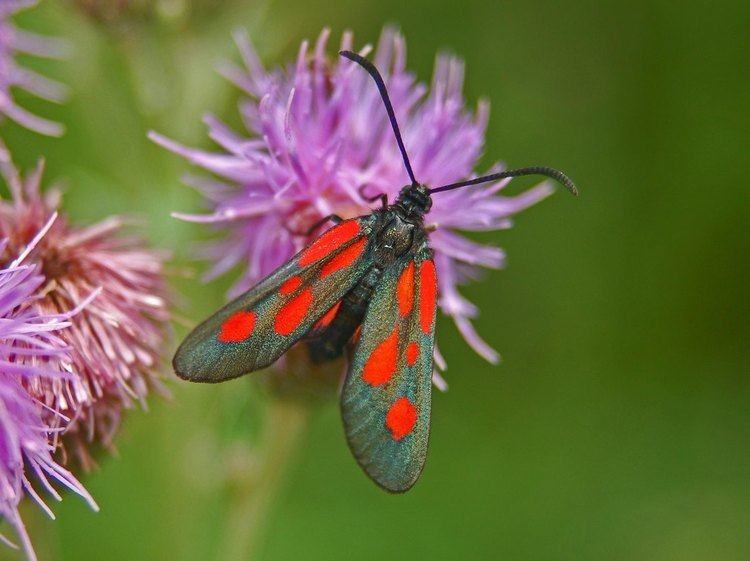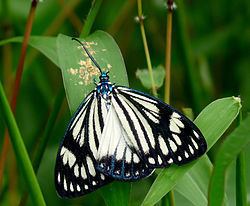Scientific name Zygaenidae Rank Family | Higher classification Zygaenoidea | |
 | ||
Lower classifications Zygaena, Six‑spot burnet, Adscita statices, Orna | ||
Cyclosia macularis macularis female zygaenidae p malaysia
The Zygaenidae moths are a family of Lepidoptera. The majority of zygaenids are tropical, but they are nevertheless quite well represented in temperate regions. Some of the 1000 or so species are commonly known as burnet or forester moths, often qualified by the number of spots, although other families also have 'foresters'. They are also sometimes called smoky moths.
Contents
- Cyclosia macularis macularis female zygaenidae p malaysia
- Stylura sp moth burnet or forester moths zygaenidae procridinae
- Description
- Economic importance
- Selected taxa
- References

All 43 species of Australian zygaenids are commonly known as foresters and belong to the tribe Artonini. The only nonendemic species in Australia is Palmartona catoxantha, a Southeast Asian pest species which is believed to be already present in Australia or likely to arrive soon.
Stylura sp moth burnet or forester moths zygaenidae procridinae
Description

Zygaenid moths are typically day flying with a slow, fluttering flight, and with rather clubbed antennae. They generally have a metallic sheen and often prominent spots of red or yellow. The bright colours are a warning to predators that the moths are distasteful - they contain hydrogen cyanide (HCN) throughout all stages of their life cycle. Unlike most insects with such toxins, they obtain glucosides from the plants they utilize so that HCN can be used as a defence. However, they are capable of making HCN themselves, and when in an environment poor in cyanide-producing plants, synthesize it themselves. They are known to have mimicry complexes based on these toxins.

Adults are small and grey or black in colour. The prothorax is often reddish and has bright markings. Adults have a well-developed proboscis and can be found visiting flowers. Antennae are pectinate in both sexes and plumose in males. Adult wings rest with fore wings directed backwards to cover the hind wings and abdomen.
Economic importance
The grapeleaf skeletonizer can be a problem in vineyards, feeding on foliage and can also be found feeding on Virginia creeper.
Description
Larvae are stout and may be flattened. A fleshy extension of the thorax covers the head. Most feed on herbaceous plants, but some are tree feeders. Larvae in two subfamilies, Chalcosiinae and Zygaeninae, have cavities in which they store the cyanide, and can excrete it as defensive droplets.
Selected taxa
Genera incertae sedis include:
Pest species include:
UK species:
African species:
Extinct species:
